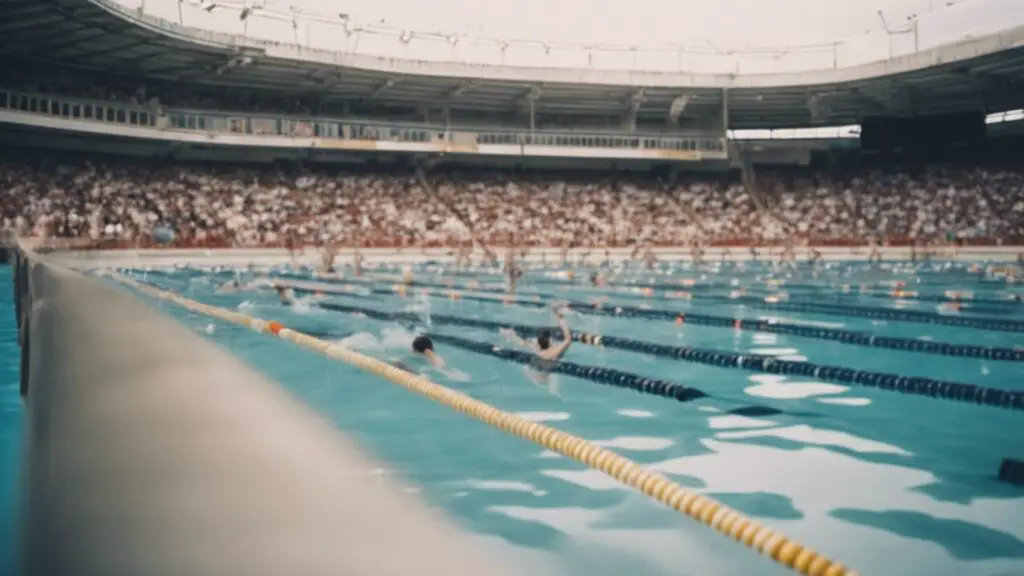Swimming in a creek can be safe if certain precautions are taken. However, assessing the water quality, potential hazards, and personal swimming abilities is important before entering the creek.
Creeks offer a tempting escape from the heat and provide a refreshing natural setting for swimming. However, the safety of swimming in a creek depends on various factors. Firstly, it is crucial to assess the water quality. Creeks may contain pollutants or harmful bacteria that can cause waterborne illnesses.
Secondly, potential hazards such as strong currents, submerged rocks, or sudden changes in water depth should be considered. Lastly, one’s swimming abilities, including stamina and techniques, are significant in ensuring personal safety.
Considering these factors and taking necessary precautions, swimming in a creek can be an enjoyable and safe experience.
Assessing Creek Swimming Safety
Considerations Before Taking a Dip
Before plunging into the refreshing waters of a creek, it is important to consider a few key factors to ensure your safety. These considerations can help you make an informed decision and minimize potential risks.
- Water quality: The first and foremost factor to evaluate is the water quality. Is it clear, clean, and free from harmful contaminants? Test the water if possible or inquire about any recent water quality assessments conducted in the area.
- Recent rainfall: Heavy rain can lead to rapid changes in water levels and increase the strength of currents in a creek. Consider the weather conditions and any recent rainfall that may affect the safety of swimming in the creek.
- Safety signage: Check for any safety signage or warnings in the area. These signs may indicate potential hazards or conditions that could pose a risk to swimmers.
- Supervision: If you plan to swim in a creek with children or inexperienced swimmers, ensure adequate adult supervision. Creek currents can be unpredictable, and it is important to have someone keeping a close eye on swimmers at all times.
Understanding Creek Ecosystems
Creeks are not just bodies of water – they are unique ecosystems that support a variety of flora and fauna. To ensure the safety of both yourself and the creek’s ecosystem, it is essential to have a basic understanding of how these ecosystems function.
- Plant life: Creeks are often lined with vegetation, such as trees, shrubs, and aquatic plants. These plants are vital in stabilizing the creek’s banks, providing habitat for various organisms, and filtering the water. Be mindful of not disturbing or damaging these plants during your swimming activities.
- Animal inhabitants: Creeks are home to various aquatic creatures, including fish, amphibians, and invertebrates. Respect the wildlife and avoid engaging in activities that may harm or disrupt their natural habitats.
- Observe from a distance: Avoid disturbing wildlife by observing them safely. Attempting to catch or handle aquatic organisms can harm them and put your safety at risk.
Recognizing Potential Hazards
While swimming in a creek can be a delightful experience, it is crucial to be aware of potential hazards that may be present in the surroundings. Recognizing these hazards allows you to take appropriate precautions and ensure a safer swimming experience.
| Hazard | Precautions |
|---|---|
| Swift currents | Avoid swimming in areas with strong currents, as they can be dangerous and difficult to escape. Look for calmer sections of the creek and be cautious of sudden drop-offs or undertows. |
| Submerged objects | Be wary of submerged logs, branches, or rocks that may not be easily visible. These objects can cause injuries if accidentally stepped on or collided with while swimming. |
| Water depth | Ensure that the water depth is suitable for swimming. Shallow areas can pose a risk for diving or jumping, while deep sections may require stronger swimming skills. |
| Water temperature | Creeks can have varying water temperatures depending on the season and location. Cold water can lead to hypothermia, especially for extended periods of swimming. Dress appropriately and be mindful of your body’s reactions to the temperature. |
By carefully assessing these considerations, understanding creek ecosystems, and recognizing potential hazards, you can decide whether it is safe to dip in a creek. Remember, safety should always be a top priority when enjoying the beauty of nature.
Is It Safe to Swim in a Creek? Key Factors

Several key factors must be considered to ensure your safety when swimming in a creek. In this article, we will delve into three critical aspects that affect the safety of swimming in a creek.
By understanding the water quality, pollution levels, weather and seasonal impacts, and wildlife and plant life considerations, you can decide whether it is safe to dip in that inviting creek.
Water Quality and Pollution
The water quality of a creek is crucial in determining its safety for swimming. Before taking a plunge, it is essential to assess the cleanliness of the water.
Various pollutants, including chemicals, bacteria, and waste materials, can contaminate Creek water. Adverse health effects like gastrointestinal issues, skin infections, and respiratory problems can arise from swimming in polluted water.
To determine the water quality, you can consider the following factors:
- The presence of debris or trash in the creek
- Odor or discoloration of the water
- Recent heavy rainfall, which may contribute to runoff and pollution
- Local advisories or warnings regarding water quality
Additionally, you can research the creek’s history of pollution or consult local authorities for water quality reports. Keeping an eye on these factors will help you make an informed decision about whether it is safe to swim in a creek.
Weather and Seasonal Impacts
The weather and changing seasons can significantly impact the safety of swimming in a creek. Both natural and seasonal factors play a role in determining the creek’s suitability for swimming.
Heavy rainfall can increase water flow, potentially causing strong currents that pose a danger to swimmers. Flash floods are also a concern in areas prone to sudden downpours.
It is essential to check the weather forecast before heading to the creek and avoid swimming during or immediately after heavy rain.
During certain seasons, creek water levels may fluctuate, making swimming unsafe. Spring thaw or summer storms can cause water levels to rise rapidly, creating hazardous conditions.
In addition, stagnant water in the creek during dry spells can lead to the growth of harmful bacteria and algae blooms, making swimming unsafe. It is important to be aware of these seasonal impacts to determine if it is safe to take a dip in the creek.
Wildlife and Plant Life Considerations
Before diving into a creek, it is crucial to consider the wildlife and plant life that inhabit it. Some creeks may be home to aquatic creatures or plants that could threaten swimmers. Venomous snakes, snapping turtles, or poison ivy are potentially harmful species that may inhabit the area.
Conducting research about the wildlife and plant life in and around the creek is essential to ensure your safety. Keep an eye out for warning signs or local knowledge about prevalent species.
If you notice large populations of harmful plants or animals, avoiding swimming in the creek is best to minimize the risk of encountering dangerous encounters.
Remember, while a creek offers a refreshing and natural swimming experience, it is crucial to prioritize your safety.
By considering these key factors – water quality and pollution, weather, seasonal impacts, and wildlife and plant life considerations – you can make an informed decision and enjoy swimming in a creek without compromising your well-being.
Unseen Dangers in Creeks
Swimming in creeks may pose unseen dangers. While it may seem safe, hidden currents, sharp objects, and pollution can make it risky. Be cautious and aware of potential hazards before taking a plunge.
Microbial Risks and Waterborne Pathogens
Swimming in a meandering creek under warm sunshine can be idyllic to cool off during summer. However, knowing the unseen dangers lurking beneath the serene surface is essential. One such concern is the presence of microbial risks and waterborne pathogens.
Is the clear, inviting water safe to swim in? Unfortunately, the answer is not as straightforward as one would hope. Creeks can be a breeding ground for various microorganisms and bacteria, some of which can risk human health.
These organisms can enter the water through various sources like runoff from agricultural areas, animal waste, or sewage overflow.
Waterborne pathogens, including bacteria like E. coli and viruses like Norovirus, can cause various illnesses, from minor gastrointestinal discomfort to more severe infections.
These pathogens are invisible to the naked eye, making it challenging to detect their presence solely based on the water’s appearance.
Before taking a dip in a creek, it is advisable to check for any water quality advisories or warnings issued by local authorities. Environmental agencies regularly test and monitor popular swimming areas to ensure public safety.
Additionally, avoiding swimming in creeks after heavy rainfall is wise, as it can significantly increase the risk of microbial contamination.
Currents, Undertows, and Unpredictable Water Flow
Aside from microbial risks, currents, undertows, and unpredictable water flow can turn a leisurely swim into a dangerous situation without warning. While creeks may appear calm and shallow, swift currents can be beneath the tranquil surface.
This is especially true when creeks experience heavy rainfall or have a nearby waterfall, as the increased water volume can create powerful currents. These hidden currents can sweep even the strongest swimmers off their feet, leading to disorientation and potentially compromising their safety.
Additionally, undertows can be present in certain creek areas, creating powerful underwater currents that pull swimmers downwards. These undertows are unpredictable and can vary in strength, making it crucial to exercise caution when swimming in unfamiliar creek environments.
Assessing the water flow and current conditions before entering a creek is essential. If the water appears fast-moving or if signs of turbulent water are visible, it is best to avoid swimming altogether to prevent any potential dangers.
Human Impact on Creek Safety
The safety of swimming in a creek is not solely dependent on natural factors but is also influenced by human impact. Our choices and actions can significantly affect the well-being of creeks, making it imperative for us to be responsible stewards of these natural treasures.
One of the leading human impacts on creek safety is pollution. Improper trash, chemicals, and other waste disposal can contaminate the ecosystem and those in contact with the water.
By practicing responsible waste management and limiting the use of harmful substances near creeks, we can help maintain their safety and preserve them for future generations.
Additionally, altering natural landscapes through construction projects and deforestation can impact the stability and flow of creeks. This alteration can exacerbate erosion, create hazards such as submerged obstacles, or change the water’s natural course, posing further risks to swimmers.
Ensuring creek safety requires the collective effort of both individuals and communities. Implementing regular clean-up initiatives, respecting private property boundaries near creeks, and promoting environmental education can all contribute to a safer and healthier creek ecosystem.
Ensuring Personal Protection
Swimming in a creek can be an invigorating and refreshing experience. Still, it’s essential to prioritize your safety. Taking necessary precautions and being prepared can make all the difference in ensuring personal protection.
This article will discuss recommended safety gear, best practices for individuals and groups, emergency preparedness, and first-aid tips for creek swimming. Let’s dive in!
Recommended Safety Gear for Creek Swimming
When venturing into a creek for a swim, having the proper safety gear can significantly enhance your protection. Here are some essential items to consider:
- A well-fitted and comfortable life jacket should be worn, especially if you’re not a proficient swimmer or the current is strong. Remember, safety should never be compromised.
- Protective footwear, such as water shoes or sandals with a good grip, is essential to prevent cuts, bruises, or slips on slippery creek floors.
- Sunscreen with a high SPF rating is a must to shield your skin from harmful UV rays, even if the creek is shaded.
- A whistle or portable air horn can be invaluable in attracting attention or alerting others in an emergency.
Best Practices for Individuals and Groups
Whether you’re swimming alone or with a group, it’s crucial to follow these best practices for a safe and enjoyable experience in the creek:
- Stay within your comfort zone and swim within designated areas recommended for swimming. Avoid venturing into unknown or potentially dangerous waters.
- Continuously swim with a buddy or inform someone trustworthy of your intended swimming location and estimated return time. This ensures that you have someone watching out for your safety.
- Take regular breaks to rest and hydrate, especially on hot days. It’s essential to listen to your body and avoid overexertion.
- Observe and comply with any signage or instructions provided by the authorities. They are in place to keep you and others safe.
Emergency Preparedness and First-aid Tips
While prevention is critical, being prepared for unexpected situations and equipped with basic first-aid knowledge is crucial. Consider these tips:
| Emergency Preparedness | First-Aid Tips |
|---|---|
|
|
Following these recommendations can ensure your protection while swimming in the creek. Stay safe, enjoy your swim, and embrace the beauty of nature!
Evaluating Local Creek Conditions
Before taking a plunge into a nearby creek, it’s essential to evaluate the local conditions to ensure your safety. By researching and assessing the specific site, considering the role of local authorities and advisories, and seeking community feedback, you can find safe swimming spots.
Let’s dive deeper into these factors.
How to Research and Assess Site-specific Safety
When evaluating local creek conditions, undertaking thorough research is crucial. Start by considering the following:
- Water quality: Check if the creek has a water contamination or pollution history. Look for any advisories or warnings issued by local health departments regarding potential risks.
- Weather conditions: Assess the current and upcoming weather forecasts. Heavy rainfall can increase water levels, leading to stronger currents and potentially hazardous situations.
- Topography: Examine the creek’s surroundings, taking note of any cliffs, rocky areas, or submerged obstacles that could pose risks to swimmers.
- Wildlife presence: Some creeks may be home to wildlife species such as snakes, alligators, or aggressive waterfowl. Research the local fauna to ensure a safe swimming environment.
By performing thorough research and considering these factors, you can better evaluate the site-specific safety of a creek before taking a dip.
The Role of Local Authorities and Advisories
Local authorities play a significant role in ensuring the safety of recreational areas such as creeks. They often conduct regular inspections and provide valuable information for swimmers. Here’s what to consider:
- Government agencies: Research the responsible government agencies that oversee creeks and their regulations. They may offer information regarding water quality testing, safety guidelines, and any closures or restrictions.
- Advisories and alerts: Take note of any advisories or alerts issued by local authorities, especially during periods of heavy rainfall or known water quality issues.
- Permits and regulations: Check if swimming is permitted in the creek and if any specific rules or regulations are in place. Some areas may require permits for swimming or have designated swimming zones.
By staying informed about the role of local authorities and being aware of their advisories, you can make informed decisions regarding the safety of swimming in a creek.
Community Feedback and Safe Swimming Spots
While researching and assessing local creek conditions is essential, seeking community feedback is also valuable. The experiences of others can provide useful insights and help you identify safe swimming spots. Here are some ways to gather community feedback:
- Online forums and communities: Look for local forums or social media groups where individuals share their experiences swimming in nearby creeks. Respond to comments regarding water quality, hidden risks, or recommended spots.
- Talking to locals: Engage in conversations with locals familiar with the area. They may have valuable firsthand knowledge of the best swimming spots and any potential dangers to avoid.
- Local news and publications: Keep an eye on local news sources or publications that may cover stories related to creek safety or water quality issues. They can provide updates on any recent incidents or concerns.
By tapping into community feedback, you can gain valuable insights into safe swimming spots and make more informed choices when enjoying a dip in a nearby creek.
Environmental Responsibilities of Swimmers
Swimming in a creek can be an exhilarating and refreshing experience when it comes to enjoying the great outdoors. However, as nature lovers, we must ensure that we properly care for the environment while indulging in this activity.
By minimizing our ecological footprints, respecting habitat and species preservation, and participating in clean-up and conservation efforts, we can swim responsibly and contribute to the well-being of our natural surroundings.
Minimizing Ecological Footprints
Swimmers can significantly minimize their ecological footprints and preserve the delicate balance of creek ecosystems. Here are a few practices that can help achieve this:
- Avoid using chemical-based sunscreens that can contaminate the water and harm aquatic life.
- Refrain from littering or leaving any personal belongings behind. Keep in mind the principle of “leave no trace.”
- Choose eco-friendly swimming gear and equipment, such as biodegradable swimming goggles and recyclable swimwear.
- Consider carpooling or public transportation when visiting creek areas to reduce carbon emissions.
Respecting Habitat and Species Preservation
Respecting the natural habitat and protecting the diverse species that inhabit creek environments is crucial for maintaining the ecological balance. The following guidelines can help swimmers do their part:
- Observe and appreciate wildlife from a distance, avoiding disturbing their natural behavior.
- Avoid stepping on vegetation or trampling fragile habitats that support a variety of organisms.
- Be aware of designated protected areas and respect any restrictions or guidelines set by local authorities.
- Do not collect or remove plants, rocks, or other natural materials from the creek.
Clean-up and Conservation Efforts While Swimming
Clean-up and conservation efforts should not be limited to designated events or activities; they should be practiced continuously while swimming in a creek. Here are some steps swimmers can take:
- Pick up trash or debris found in or near the creek and dispose of it properly.
- Participate in organized clean-up initiatives or start small-scale local efforts to keep the creek and its surroundings clean.
- Support local conservation organizations that work towards protecting and preserving creek ecosystems.
- Report any signs of pollution or environmental concerns to the relevant authorities.
By adhering to these environmental responsibilities while swimming in a creek, we can enjoy nature’s beauty and actively contribute to its well-being. Let’s ensure future generations can continue to experience the joys of swimming in crystal-clear waters amidst unspoiled habitats.
Conclusion
While swimming in a creek can be an enjoyable experience, it is essential to consider the potential risks. Water quality, stream flow, and hazards should be carefully evaluated before a plunge.
By taking necessary precautions, conducting research, and being mindful of personal safety, one can decide whether swimming in a creek is safe.

















